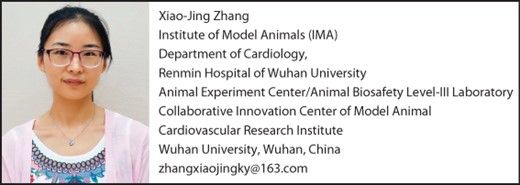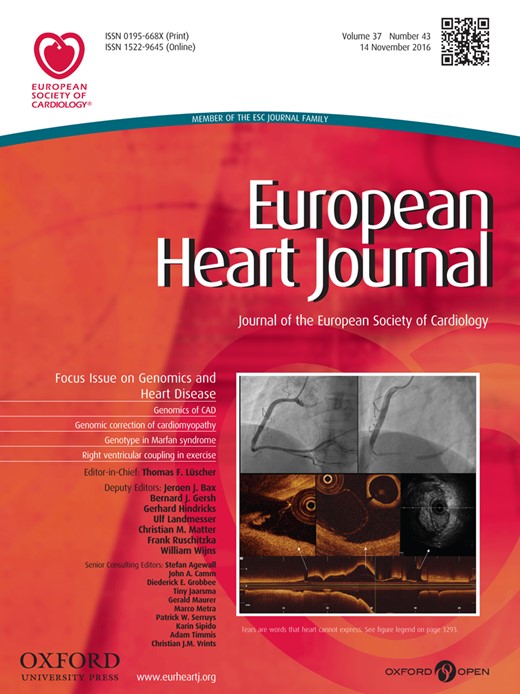-
PDF
- Split View
-
Views
-
Cite
Cite
The Institute of Model Animals of Wuhan University, China, European Heart Journal, Volume 37, Issue 43, 14 November 2016, Pages 3257–3259, https://doi.org/10.1093/eurheartj/ehw445
Close - Share Icon Share
A centre of scientific innovation leading the quest to conquer cardiometabolic diseases
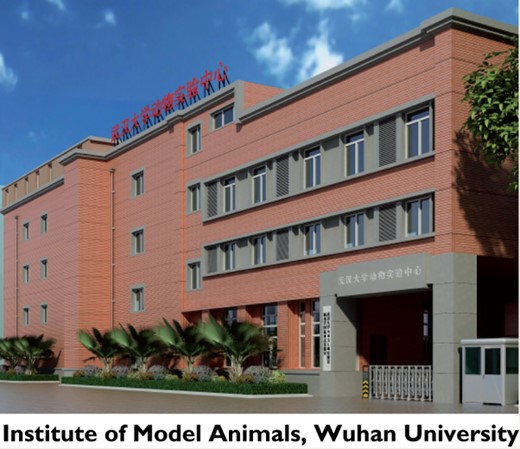
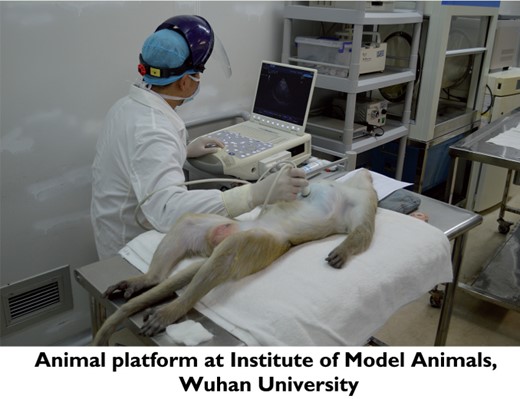
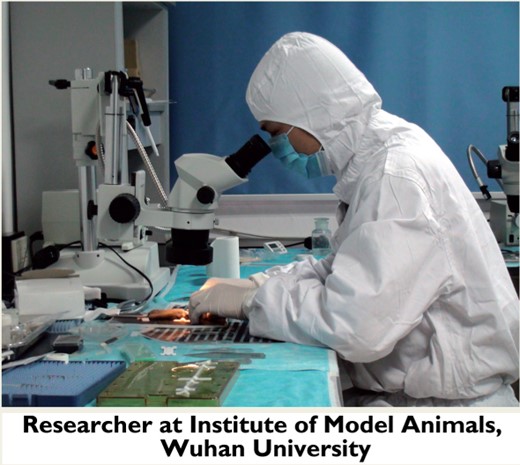
A successful academic research institute should have three important components: innovative research, state-of-the-art technological platforms, and interactive and talented teams, all seamlessly connected by a common mission to advance basic knowledge and to bring applicable benefits with national and global impact. The Institute of Model Animals (IMA) of Wuhan University is such a place that has evolved into a leading research powerhouse focusing on the most significant human diseases while providing exceptional quality service to the scientific communities at national and international levels. Under the Directorship of Hongliang Li, MD, PhD, a strong multidisciplinary team at IMA are making bold strides to fulfil the institute’s mission ‘To establish the best research platform, build the best team, and do the best research’.
Scientific research
Cardiometabolic diseases are the leading causes of death at a global level affecting millions of lives. The diseases manifest in a spectrum of interconnected pathological alterations in metabolic activities and cardiovascular function, either alone or in combinations. Increasing evidence has implicated chronic low-grade inflammation as a common and significant culprit of cardiometabolic dysfunction. However, previous efforts to dampen inflammation as a therapeutic strategy to treat cardiometabolic diseases have not been very successful clinically and in some cases may even render the patients more susceptible to infection. Therefore, traditionally defined inflammation involving the immune system may not be the actual root cause of cardiometabolic diseases. What, then, is the actual mechanism underlying the diseases?
Innate immunity, as the first line of defence in our body, has been recognized as a major contributor to inflammatory responses against a whole host of infections. However, the innate immune signalling factors have evolutionarily emerged much earlier than the establishment of mature immune system, whereas cardiovascular and metabolic systems have been developed to sustain life. In fact, some well-recognized immune signalling genes do not directly participate in the immune response in certain animal species, for example pik-1 (homologues to mammalian irak) in Caenorhabditis elegans. Is it possible that innate immune signallings may have important functions beyond the classic immune system and exert critical regulatory roles in the cardiometabolic system? This has become the central question pursued by Professor Li and his team at IMA.

Professor Hongliang Li’s investigation about innate immune signalling in cardiometabolic diseases started 15 years ago. Now, the team he leads have made advancements in defining the novel roles of innate immune signalling in cardiometabolic diseases and further illustrate the mechanisms by which innate immune signalling impacts on the pathogenesis of these diseases, particularly for cardiac remodelling, vascular injury, organ injury following ischemia/reperfusion, obesity, insulin resistance, and hepatic steatosis.
Many of his discoveries started from clinic analysis. From diseased tissue samples, Prof Li’s group identified significant changes of innate immune related factors at a molecular level, including the expression of IRFs, TRAFs, CARDs, DKKs, ABINs, DUBs, TRIMs, RGSs, A20, Mindin, Tollip, RECS1, and SIKE, implicating abnormal innate immune signalling status in response to pathological cardiometabolic stresses. They further interrogated the causal relationship between innate immune signals and cardiometabolic diseases by extensive experiments in genetically manipulated animal models. The findings from these studies yielded something truly exciting. The innate immune pathway is an intrinsic part of the stress response with a significant contribution to the initiation and progression of cardiometabolic diseases. However, its functions (protective or deleterious) in these pathologies are not always consistent to their previously established roles in the innate immune response. More importantly, the innate immune signalling is significantly reprogrammed via extensive crosstalk with other non-immune factors in the regulation of cardiometabolic diseases.
Professor Li is among the first to demonstrate the role and mechanisms of innate immune signalling in cardiometabolic diseases. These discoveries have led to a very novel concept of ‘innate immune signalling reprogramming’. This is a significant contribution to advance our current understanding for the pathogenesis of diseases and going forward intrigues us to explore similar involvement of innate immune signalling in other diseases.
The clinic value of fundamental discoveries calls for a strong support from clinic. As a member of the Department of Cardiology at Renmin Hospital of Wuhan University, Professor Li’s team enjoys a high level of continuous support from his clinical colleagues of the hospital. Under the leadership of President Tang Qi-Zhu, M.D., the Renmin Hospital consists of 76 clinical departments equipped with 4000+ hospital-beds for inpatient services and providing care to an average of 2.41 million patients annually.
Combining basic discoveries and clinic support from the hospital, Professor Li and colleagues have made the goal of clinical translation as part of the central mission at the Institute. By starting with solid clinical observation, through rigorous basic science and developing translatable therapeutic strategies, Prof Li’s group are on a winning path to improve future treatment of cardiometabolic diseases. The successful examples are numerous: for example, by introducing SIKE into the monkey genome, they demonstrated a significant protection against pathological cardiac hypertrophy and heart failure, a significant step forward for developing a clinically relevant therapeutic strategy beyond the mice models.
These remarkable accomplishments have been noted by the scientific community through multiple international awards, and numerous publications in recent years in top-ranking journals, including Nature Medicine, Nature Communications, Circulation, Circulation Research, Hepatology, Journal of Hepatology, PNAS, Diabetes, Cell Death and Differentiations, and Hypertension.
To date, more than 200 peer-reviewed papers have been published by Professor Li's team and more than 100 patents have been applied for or granted. The research achievements from IMA have been highly evaluated in more than 30 monographs.
Platforms
For a great institute, technological platforms provide essential hardware support, while the research team is the important software. IMA is equipped with an extensive array of state-of-the-art devices operated by professional technicians. They cover high-throughput genetic engineering, model animal generation, and disease animal models. IMA is also able to provide comprehensive phenotypic evaluation and in-depth mechanism exploration. These services are not only for the institute members but also for investigators from other universities, institutes, and hospitals throughout China.
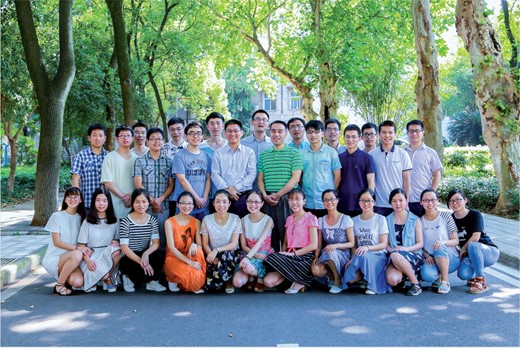
One of the greatest technical strengths of IMA is high throughput generation of model animals. The institute has a well-equipped gene modification, micromanipulation, and animal management platform and has considerable experience in genome editing techniques. So far, over 1000 genetically engineered animals, including mouse, rat, rabbit and monkey, have been generated, and the amount grows at a speed of approximately more than 200 new strains each year. Equipped with modern and advanced facilities for genetic engineering and management of small animals, the IMA also established a standard environment for monkey accommodation and experiments to facilitate clinic translation of scientific research.
China has a huge demand for animal disease models for its bourgeoning biomedical research enterprise but the dedicated support is relatively inadequate. IMA of Wuhan University is currently one of the largest national model animal supporting platforms with a sophisticated professional service system. Remarkably, many services to the research community in China are provided free of charge. Within the past 10 years, about 500 labs received genetically modified animals from this institute, and more than 600 scientists have benefited from IMA’s service. ‘Without the professional and enthusiastic assistance from the Institute of Model Animal, research in our group cannot be completed so well’, commented a researcher who recently published an original article in Journal of Hepatology from Shanghai Jiao Tong University, ‘and Dr. Li’s team provides gracious technological help to us as well’. The combined basic research mission and a strong technological platform as demonstrated in IMA have facilitated Chinese biomedical research in a big way.
Research team
Research team building is the pivotal point of the institute and a number of talented researchers have been recruited here, including the national recipients of ‘Thousand person plan’, distinguished experts, national distinguished young scholars, ‘Cheung Kong’ scholars and overseas guest professors. Currently, Dr. Li’s research team constitutes over 100 multi-level talents, including professors, scientific staff, post-docs, graduate students, and technicians. The well-trained and skilled staff have extensive research experience in the fields of microbiology, medical virology, immunology, pathology, cell biology, molecular biology, pharmacology, clinical laboratory medicine, radiology, veterinary, and laboratory animal medicine. The integration and complementing of interdisciplinary approaches makes the institute capable of independently completing research project design, experimentation, data analysis, conference presentation and article publication. More importantly, the engagement of a large research team encourages novel ideas and broader views to tackle challenging issues.
Believing that original idea is the key to promoting science, IMA specifically emphasizes innovation as a fabric of its culture. The institute provides incentives to all its members to develop their skills and pursue research goals. The freedom to explore unconventional ideas allows cutting-edge science to flourish at the institute.
However, excellence in science alone is not enough. ‘Before being a scientist, you must be human’ Prof Li often teaches his students, ‘You must always consider how you can contribute to society’. With a motivated team following the role model set by Prof Li, the institute has a strong sense of team spirit and social conscience. Superior scientific research, a public service platform, and social responsibility make the institute a place that can impact the future of China and the world beyond.
Perspectives
Under the leadership of Prof. Hongliang Li, the institute is dedicated to uncovering the secrets underlying cardiometabolic diseases and making outstanding achievements in basic research with promising clinical applications. However, staying at the leading edge of a research field as dynamic as cardiometabolic diseases and providing continuous platform support for scientific researchers is challenging and requires a huge amount of sustained effort. Eventually though, all of these efforts are rewarding and will continue to contribute towards the development of both basic and clinical sciences. The institute stays committed to further advancement of scientific research and strengthening of its public service platform.
Exciting things are happening every day in the Institute of Model Animals of Wuhan University in Wuhan, China. The institute is open for visits and for collaborations.
